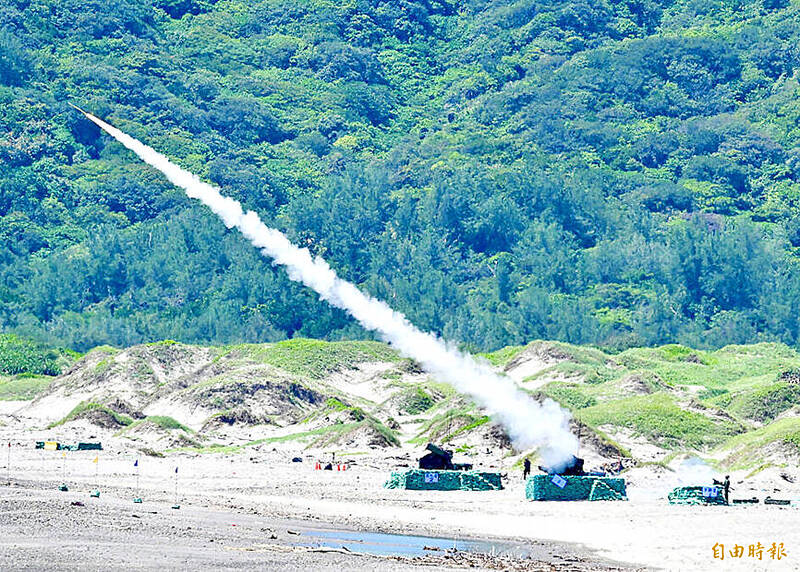《TAIPEI TIMES》 Military seeks to increase order of Stingers

A stinger missile is fired during a live-fire exercise in Pingtung County’s Manzhou Township on July 4 last year. Photo: Lo Pei-te, Taipei Times
MISSILE PROCUREMENT: An official said the order increase was to deal with a rise in Taiwan Strait tensions, with more capabilities needed against aircraft and drones
By Lo Tien-pin, Wu Che-yu and Jonathan Chin / Staff reporters, with staff writer
Taiwan hopes to increase the number of Stinger missiles being obtained via US arms sales almost fivefold from 500 systems to 2,485, the Ministry of National Defense told lawmakers in a budget report.
The army would take over the Stinger program from the navy and change the order to add 1,985 missiles and 549 gripstock-control groups, as well as identification friend or foe (IFF) transponders, the ministry said in the document filed to the legislature last week.
Delivery of the missiles was scheduled to be completed in 2031, it said.
The budget allotted to the program would increase to NT$69 billion (US$2.16 billion) from NT$13.37 billion, it said.
The US has authorized the changes to the deal, the ministry added.
The ministry said it initially planned to buy 250 missiles, 108 gripstocks and 108 IFF transponders for the army, and 250 missiles, 70 gripstocks and 62 transponders for the navy. The navy later added 45 missiles, 15 gripstocks and 15 transponders to its order. Whether the revised deal includes the navy’s addition was unknown.
A defense official said on condition of anonymity that the ministry increased the order to deal with a rise in tensions across the Taiwan Strait.
The incursions into Taiwan’s air defense identification zone by the Chinese military show that ground forces urgently need to boost their air defense capabilities against aircraft and drones, the official said.
The FIM-92 Stinger, a short-range surface-to-air missile with a range of 4,800m, is typically operated by a crew of two, but can be fired by a single operator.
The first batch of Stinger missiles — to be delivered next year — would go to army and marine units, military police guarding Taipei, navy ships and coast guard garrisons in the Pratas Islands (Dongsha Islands, 東沙群島) and Spratly Islands (Nansha Islands, 南沙群島), the ministry said.
The second batch to be delivered by 2031 would be held in reserve, it added.
Separately, the ministry said in the budget report that the air force next year is expected to spend a record NT$43.7 billion on maintenance and repairs to sustain its aircraft and facilities.
The sum would be a 16 percent increase compared with NT$36.8 billion this year and a 50 percent increase compared with last year, the report said.
Next year’s budget includes a NT$23.7 billion component to obtain spare parts for aircraft from fighter jets to cargo planes, as well as ground equipment, and NT$20 billion for maintenance and repair, it said.
Air force expenditure to maintain weapons systems and facilities have increased 224 percent in the past eight years.
Beijing’s military flights around Taiwan began when Tsai Ing-wen (蔡英文) was elected president in 2016 and escalated after then-US House of Representatives speaker Nancy Pelosi visited Taipei in 2022.
Tasked with monitoring and intercepting Chinese aircraft, the air force has been increasing spending on airframe maintenance and placed an order for 66 Lockheed-Martin F-16V jets and parts, which the US is expected to deliver in full by 2026.
新聞來源:TAIPEI TIMES











